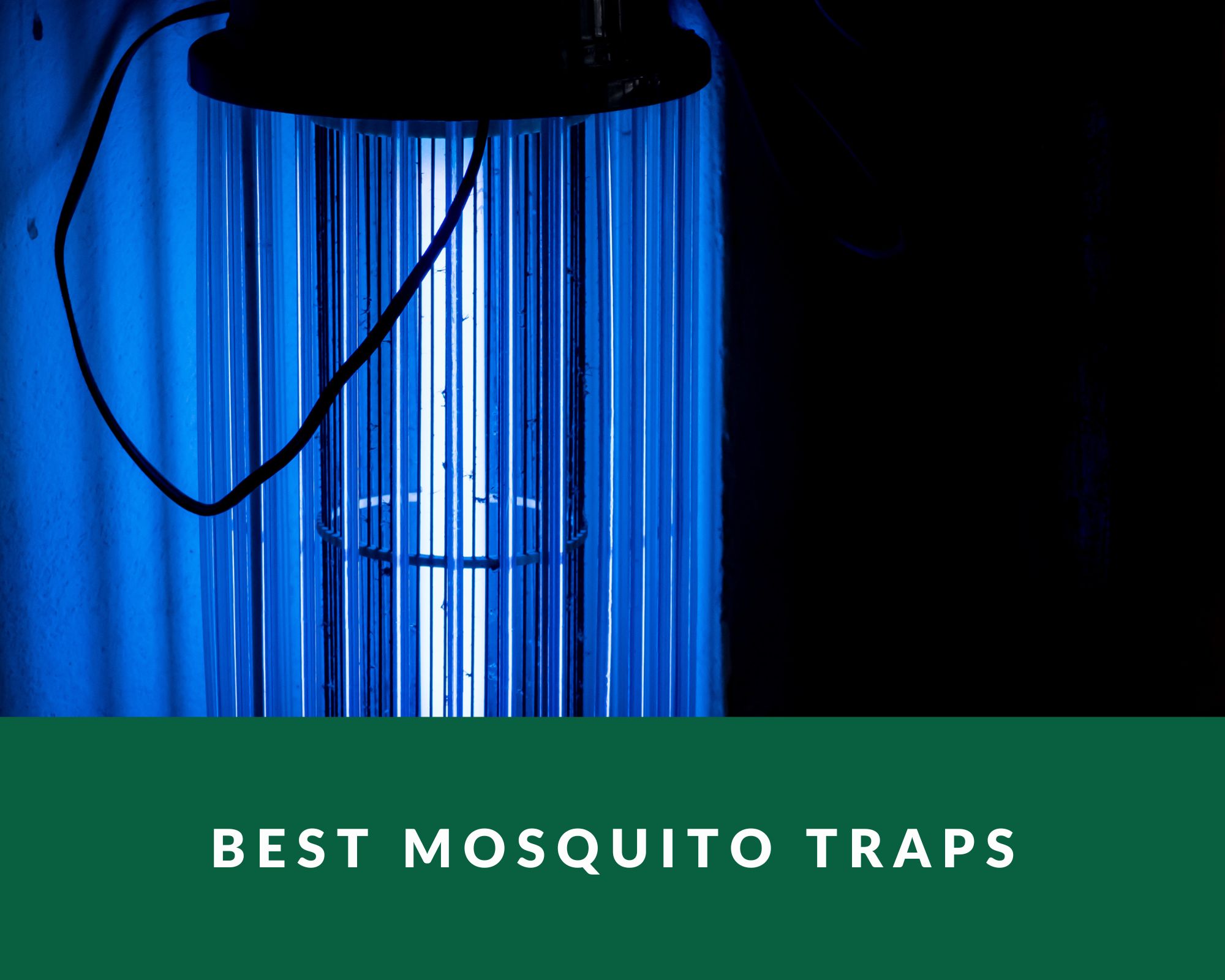In many houses, using mosquito traps has become a very common method of controlling mosquitoes. To stop the mosquitoes in your lawn from reproducing, you should employ the best mosquito traps.

Mosquitoes cannot fly more than 100 meters from their place of birth, according to scientific evidence. Most mosquito traps are made expressly to draw mosquitoes to a light, where they are lured into a dry storage tank. We have put up a list of mosquito trap items that you ought to think about buying because they are the most efficient ones available online.
What are mosquito traps
Mosquito traps are made to attract mosquitoes, which then kill them. Heat, carbon dioxide, and specific bodily odors all draw mosquitoes in. Mosquito traps turn propane into CO2 and blend it with attractants like heat and dampness. When mosquitoes get close to the trap, a suction pulls them into a net and quickly drives them away. Within 24 hours, they pass away from dehydration.
A thermal heat plume is produced by heat traps, which use an intake fan to draw in any nearby mosquitoes.
UV light traps draw mosquitoes with a small fluorescent or LED ultraviolet light, typically in combination with heat or CO2.
Types of mosquito trap
1. Heat traps
2. Ultraviolet light traps
3. Propane-powered traps
4. Carbon dioxide traps
5. Glue boards
- A thermal heat plume is produced by heat traps, which use an intake fan to draw in any nearby mosquitoes.
- UV light traps draw mosquitoes with a small fluorescent or LED ultraviolet light, typically in combination with heat or co2.
- Propane-powered traps ignite propane to produce heat, release carbon dioxide, and attract any flying mosquitoes in the area. These traps can be deployed everywhere because they are movable.
- Carbon dioxide is released from carbon dioxide traps using propane or a compressed air cylinder to resemble real breath.
- Many mosquito traps have glue boards as a part. They’re used in conjunction with a mosquito lure and intake fan and are designed to make it simpler to get rid of the insects they catch..
Best mosquito traps
1. Dyna mosquito trap (DT2000XL)
The insect traps made by Dyna Trap work on the same principles as conventional traps. The DT2000XL model employs a multi-stage method that involves heat generating, a fluorescent UV lamp, and visible bug-attracting LEDs to entice these annoying insects. The primary distinction is that the Dyna trap uses a unique technique to produce CO2 instead of using propane to accomplish it.
Dyna trap doesn’t utilize propane, therefore there’s no need to keep up with and replace various gas tanks. The system is powered exclusively by electricity. Due to the lack of additional accessories, the Dyna trap is initially less expensive. Additionally, because there is no burning propane involved, the Dyna trap can be utilized indoors.
Pros
- Less expensive startup costs because a propane tank is not required.
- Can be applied inside.
- Cheaper to keep up.
Cons
- Because there is little CO2 production, Asian tiger mosquitoes are unaffected.
- Additional insects besides just mosquitoes tend to be caught
2. Flowtron BK-40D Electronic Insect Killer
One of the least transportable choices is the Flowtron BK-40D, a device that runs on both propane and electricity. It has the ability to also employ Octenol while luring insects with a combination of LED lights and CO2.
The device uses a fan to draw insects into a catch chamber. Cleaning up is simple because there are no sticky materials inside the chamber, like glue or adhesives. The manufacturer is the only one who can fix the capture fan, according to complaints of malfunctions affecting many machines.
Pros
- Cleanup of the insect-capturing basket is simple
Cons
- Capture enthusiasts have a patchy history.
- Uses both propane and electricity to operate
- Propane can add up in price over time.
3. Katchy indoor insect and flying bugs trap
Katchy is an effective bug-catching tool that is housed in a beautiful container. This all-in-one bug catcher will draw mosquitoes and safely get rid of them. To catch even the smallest bugs, it has an interior sticky glue board, a fan, and ultraviolet (UV) light. It is child-safe and non-toxic, plus it lacks the obnoxious zapper.
Pros
- You can use it anywhere without risk.
- Simple to use
4. Neatmaster ultrasonic pest repellent
The Neatmaster is a Magento device that assists in deterring mosquitoes from invading your home. It is an efficient ultrasonic pest repeller. It uses a mix of electromagnetic and ultrasonic technologies to create sound waves that fend off these unpleasant bugs.
Pros
- A wide range of pests is repelled.
- Three intensity settings and indicators are included.
- Neither harms humans nor pets
Cons
- Inappropriate for outdoor use
- Numerous devices are required to cover a large area
5. Tysonir electric bug zapper
Although this zapper is a little less beautiful than most, it is more than capable of controlling mosquitoes and other flying insects. It may be used in either home or commercial settings, is simple to clean, and has UV light tubes that are optimized to draw flying insects.
It’s a little bit bigger and less portable than other options, but it’s still only 1.7kgs, so it’s a decent model to leave installed at home.
How to choose the best mosquito trap
Although choosing a mosquito trap is a very specific decision, there are five general considerations you should make first.
Effectiveness
The potency of attractants varies depending on the species. How mosquitoes are drawn to mosquito traps has a big impact on how effective they are.
A Co2-based system can be perfect for one residence but not for another as some attractants perform better than others.
Make sure that at least one of the attractants in your preferred trap is effective at luring mosquitoes to it in your location for the greatest results.
Maintenance
Similar to an automobile, a trap will only function effectively if it is properly maintained. Choose a trap that is simple to keep clean and in good condition for ease of maintenance. Consider that if you have experience with electrical devices. Choose a gasoline trap if you are more at ease with gas-based products.
Location
The location of your trap can have a significant impact on the outcome. Remember that certain traps are only meant to be used outside, while others are made to be used indoors; be careful not to use your trap in a situation for which it was not designed. Don’t put your traps right where people gather; instead, place them in an area where mosquitoes frequently pass by.
Mobility
The majority of mosquito traps are immobile because they are bulky, need to be plugged in, or require another kind of external fuel source. USB mosquito traps are available that can be powered and charged via a USB port! The majority of USB traps are compact and portable.
However, USB mosquito traps use a lot less power than other types of traps, therefore the area they can cover is significantly less.
Cost
One factor to think about is the price of mosquito traps. Costing up to hundreds of dollars, they are used as a temporary pest control measure.
Benefits of using mosquito traps
Mosquito traps have many advantages, including:
- Pesticides and insecticides are not used by them. Discovering they are not adding potentially dangerous substances to their property makes many individuals feel more secure.
- They offer a sustained solution. Mosquito traps continue to kill mosquitoes, unlike repellents, which only work for a few hours, or spray systems, which only work for a few weeks.
- They interfere with the mosquito’s life cycle. Your danger of being bitten decreases when there are fewer mosquitoes near your home. Instead of relying on repellents and hoping they don’t bite, try this instead.
- They go for mosquitoes that bite. Mosquito traps work by luring the female mosquito, so they don’t kill insects randomly without endangering you.
- You have control over when, where, and how to begin using them each season prior to them.
- Neither children nor pets are at risk from them. According to studies, pesticides may particularly harm youngsters and pets. Since there are no chemicals included in mosquito traps, this is simply not an issue.
Conclusion
The easiest way to get rid of mosquitoes inside your home is, obviously, to follow mosquito preventive measures that keep them outside in the first place.
This can entail clearing the area around your home of any standing water, purchasing an outdoor bug zapper, introducing plants to your landscaping that naturally ward off mosquitoes, or even spraying your yard or the perimeter of your house.
If any mosquitoes do manage to get inside, these indoor traps will help keep them under control.






